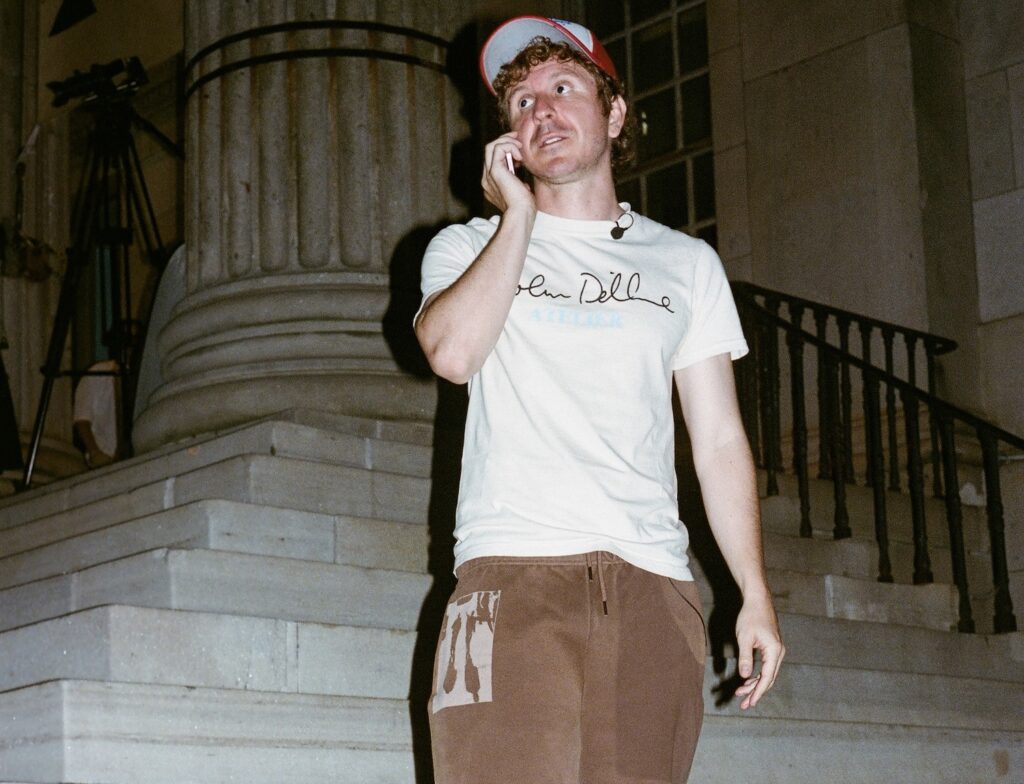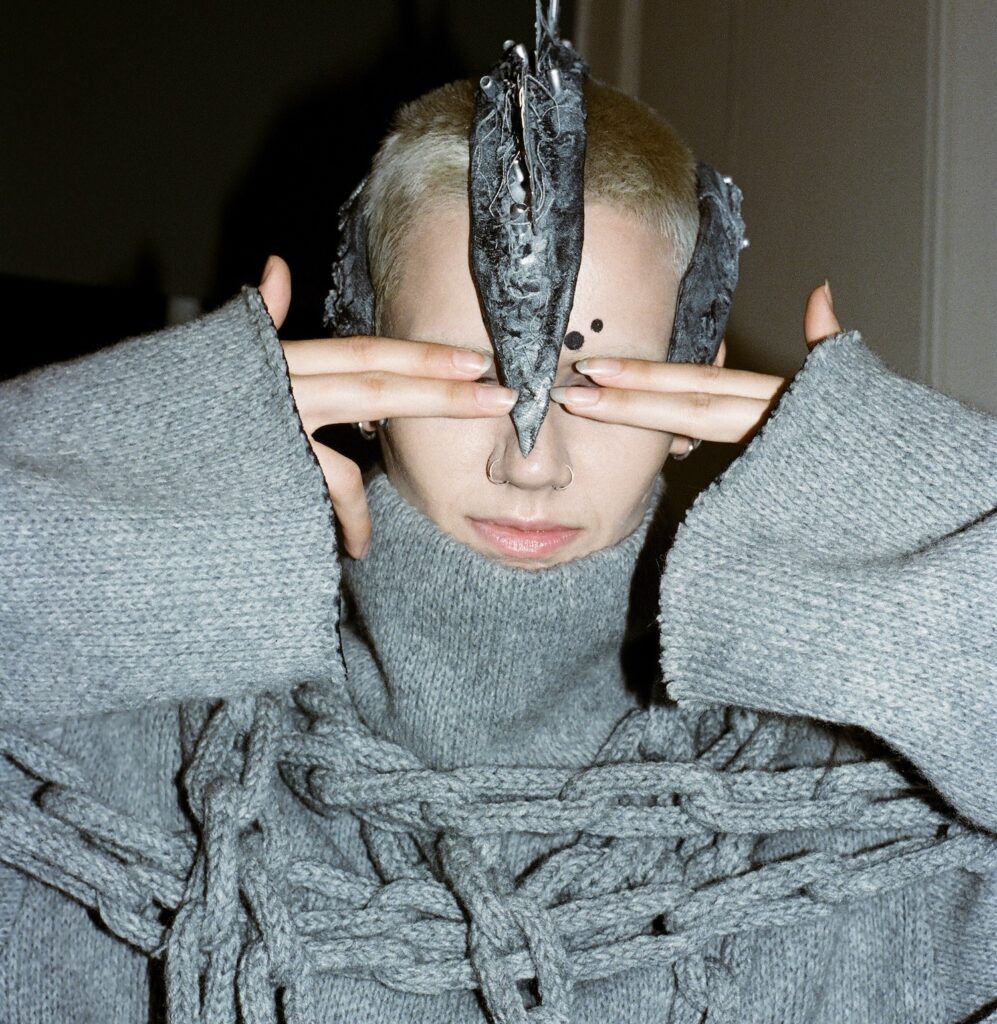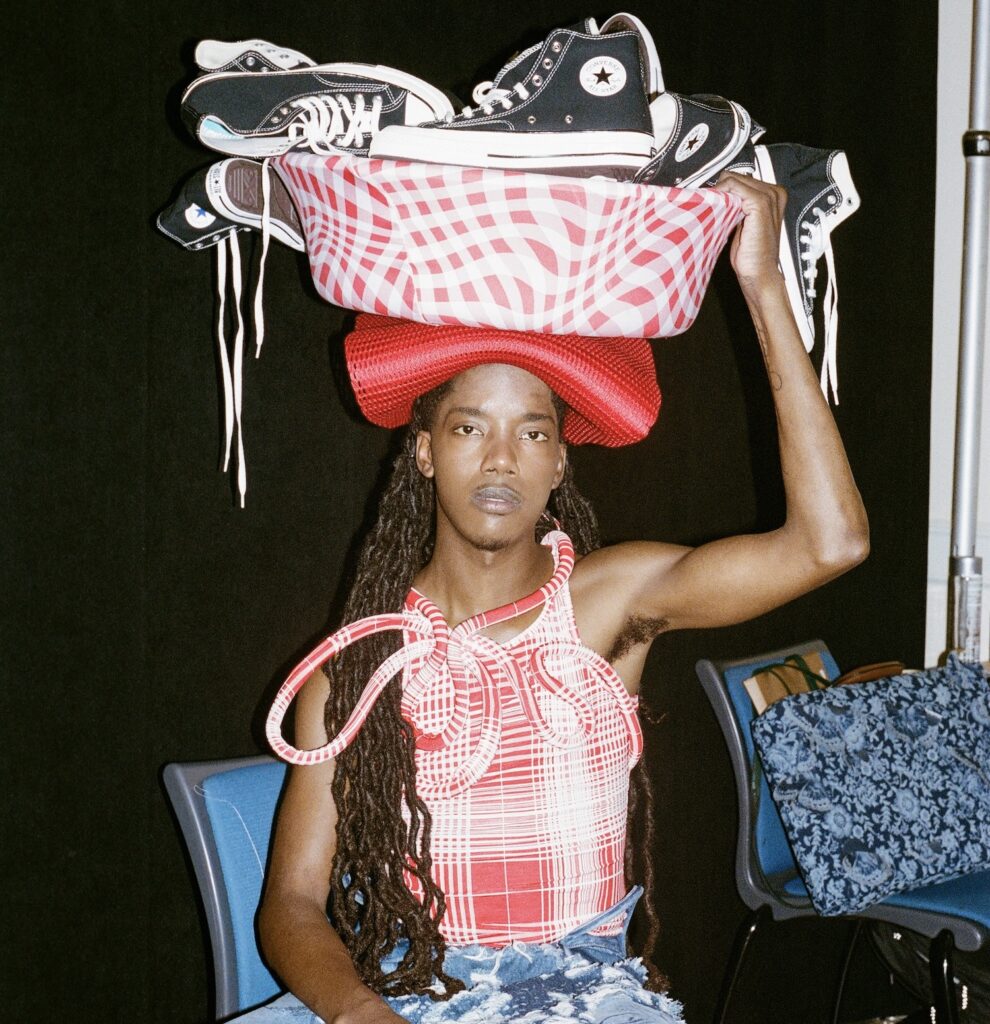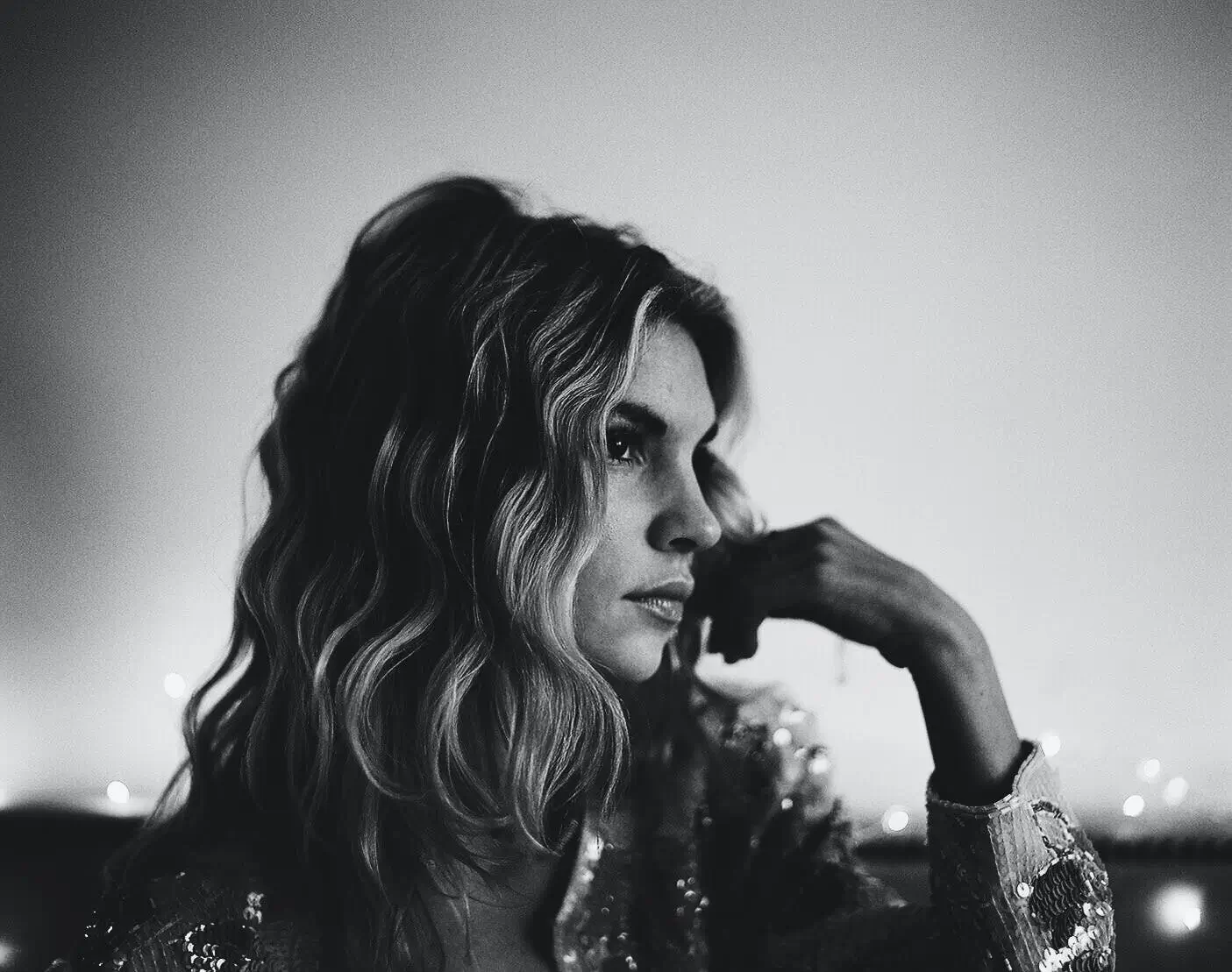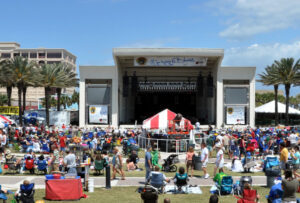The air is thick with anticipation, a kind of charged stillness interrupted by bursts of laughter, tape measures, whispered commands, and music that pulses like a heartbeat. Backstage at KidSuper’s Spring/Summer 2026 presentation during NYFW isn’t just where garments are finished — it’s the threshold between Colm Dillane’s imagination and a live performance. Here, art, storytelling, and wardrobe collide in glorious unison.
Arrival & Atmosphere
If KidSuper shows from Paris and other major cities are any guide, backstage begins hours before first model steps out. Studio lights glare harshly; flats of sketches and storyboards line folding tables. Illustrations of moons, constellations, school-uniform collars, margins of notebooks scribbled with whimsical text: these are visible everywhere. There are mood boards filled with crayon-style drawings and childhood artifacts. It’s as if the dreams from a kid’s attic have been hauled in to help build every look.
Models trickle in. Some stretch, some walk and re-walk, practicing posture, checking hems. A few of the cast are newcomers, others regulars who know how KidSuper’s universe works: how to wear multiple layers of meaning, how to carry an absurd prop, how to make fantasy believable.
Props, Sets & Costumes
One of the defining features of KidSuper for SS26 is the theatricality of its set and collection. Drawing on what’s been seen in The Boy Who Jumped the Moon, the show transforms everyday objects into gateways to fantasy. Gigantic storybooks, as seen in Paris, with turning pages become portals from which models emerge. The same kind of surreal staging is brought backstage: the seamstresses and tailors are not only mending hems, but integrating illustrations, burn marks, or 3-D printed details that recall those dramatic set pieces. Design Art Magazine+2Schön! Magazine+2
Fabrics are diverse: heavy wools with painted night skies, cottons with sketches, leather bomber jackets embellished with constellations, even pieces with distress and charred edges — burn-like detailing that give garments the look of stories in motion. Design Art Magazine+2Schön! Magazine+2
Backstage, there are also bits of absurdity and play: cardboard mock-ups of moon shapes, flashlights used to test how prints reflect, and maybe a bolted-together frame for a huge “book” prop. These set elements are being tested, nudged, repaired. Sometimes a page hinge creaks; someone improvises a better joint. The tension between perfect presentation and unfinished, organic edges is a feature, not a flaw.
The Designer: Colm Dillane
Dillane moves through the room with an infectious energy — occasionally chasing a detail, sometimes joking with models, occasionally considering whether a seam should be ripped out and remade. He’s known to embrace risk in his shows; challenges are expected. He sketches ideas late, pivots quickly, embraces things going slightly off-balance. That quality backstage is palpable: there’s faith that the imperfect, the slightly raw, adds to the emotional truth of the show. Culted+2nss sports+2
When asked about themes, the language Dillane uses backstage is poetic: “trying,” “flight,” “between improbability and belief,” “between pages,” “childhood naiveté.” The models are not just carriers of clothing but characters in a narrative: sometimes astronauts, sometimes schoolkids, sometimes storybook explorers who look like they’ve stepped out of illustrated panels.
Hair, Makeup & Styling
KidSuper’s makeup & hair teams are not after runway perfection—they are painting, drawing, shifting boundaries. You might see smudged graphite under the eyes, hair tousled as if by wind coming from the moon, maybe even streaks of paint. It’s less about polish, more about emotion. Stylistic touches lean toward the handmade and illustrative: embroidery, patchwork, raw edges, contrasting seams that look sketch-like. Layers are key; under one coat may peek a scribbled tee, under another, a shirt that looks hand-drawn. Accessories might include illustrated patches, hand-painted motifs, or props (moon cutouts, stories pages, maybe maps of constellations).
The Energy & Sound
Music is loud, playful, eclectic, shifting as the show progresses. Sometimes childlike lullabies warped, sometimes the pop dynamic of street music, sometimes ambient instrumental that makes you feel like you’re in outer space. Sound cues tell backstage when a look is about to go, when pages should turn, when a hidden door must open. The rhythm is both precise and unpredictable.
Backstage assistants coordinate via headsets; closeness breeds frantic whispers: “You, model 12, with red moon print, can you hold your coat so we can see the back? Page-turn in 3…2…” The models practice a small moment of poise just before stepping out.
Tension, Imperfection, and Moments of Magic
Not everything is seamless. A seamstress might find a print is off-register. A prop’s hinge might stick. A costume layer might catch under stage lights. These moments generate backstage crisis and creativity. Dillane is known to relish these moments—they force improvisation, invention. Sometimes, last-minute fixes become the most memorable elements of the show.
Then, the magic happens: a model emerges from a giant illustrated book just as a spotlight hits; a garment with scuffed edges that somehow glows, the illustration on a coat becomes alive under stage lights; the sequence of looks tells a story of ambition, small failures, flight. The audience can’t see the chaos backstage, but they feel the emotion, the narrative.
Collaborations & Mementos
One expects collaborations. KidSuper has pulled in partners before: with Puma, sometimes with automotive forms (Mercedes-Benz in Paris), working with fabric techniques, dye work, 3D printing. JTDapper Fashion Week+2Women’s Wear Daily+2 Backstage, prototypes of those collaborations are everywhere: samples of collaborative footwear, mockups of bags or accessories, fabric swatches from joint drops. The teams move between pieces, inspecting how color holds under runway lighting, how prints read from a distance.
Also, with every show, there are mementos: illustrated booklets given to VIPs, sketches scribbled in margins, sometimes parties after the show, sometimes drinks-and-laughs as the crew winds down. Fashion week is part performance, part community; the relationships backstage are as much a part of the culture as the clothing.
The Final Countdown & Walk Out
As showtime nears, backstage goes from controlled chaos to an orchestra hitting its crescendo. Little last-minute steamers, pins, safety tape; someone adjusts a belt; the model’s hair is fluffed. The lighting techs run cues, the music director marks the final beat.
Then the hush: models line up, someone says – “1 minute,” “go on” – gates open. There’s an exhale. Backstage becomes invisible. On the runway, every embroidered constellation, every burn mark, every moon print, every quirky prop, every storybook page turned is revealed.
Looking Back & Forward
KidSuper’s SS26 show, viewed through this backstage lens, isn’t just about clothes—it’s about dreaming, about embracing the imperfect, about letting fantasy and narrative seep into material form. What’s compelling is how Dillane and team shape this world with just enough rough edges to feel alive, but enough polish to feel unforgettable. For those who work behind the scenes, each stitch, each improvisation is part of that alchemy.
If there’s any tension, it’s in balancing the spectacle with wearability, the fantasy with the real. But the payoff is visible: models stepping out as characters in a fable, garments that feel like pages in a book, props that invite the audience to leap.
No comments yet.

